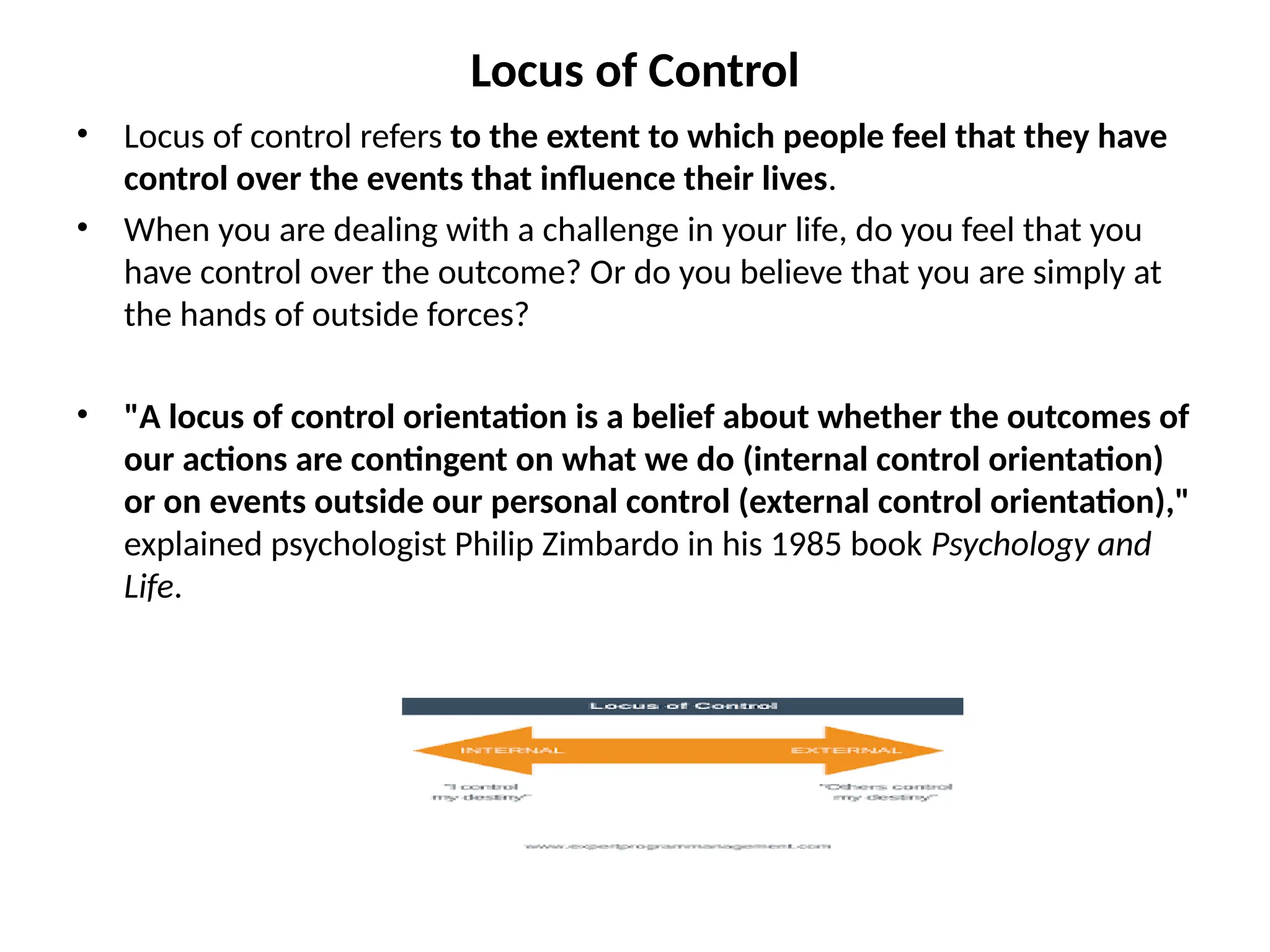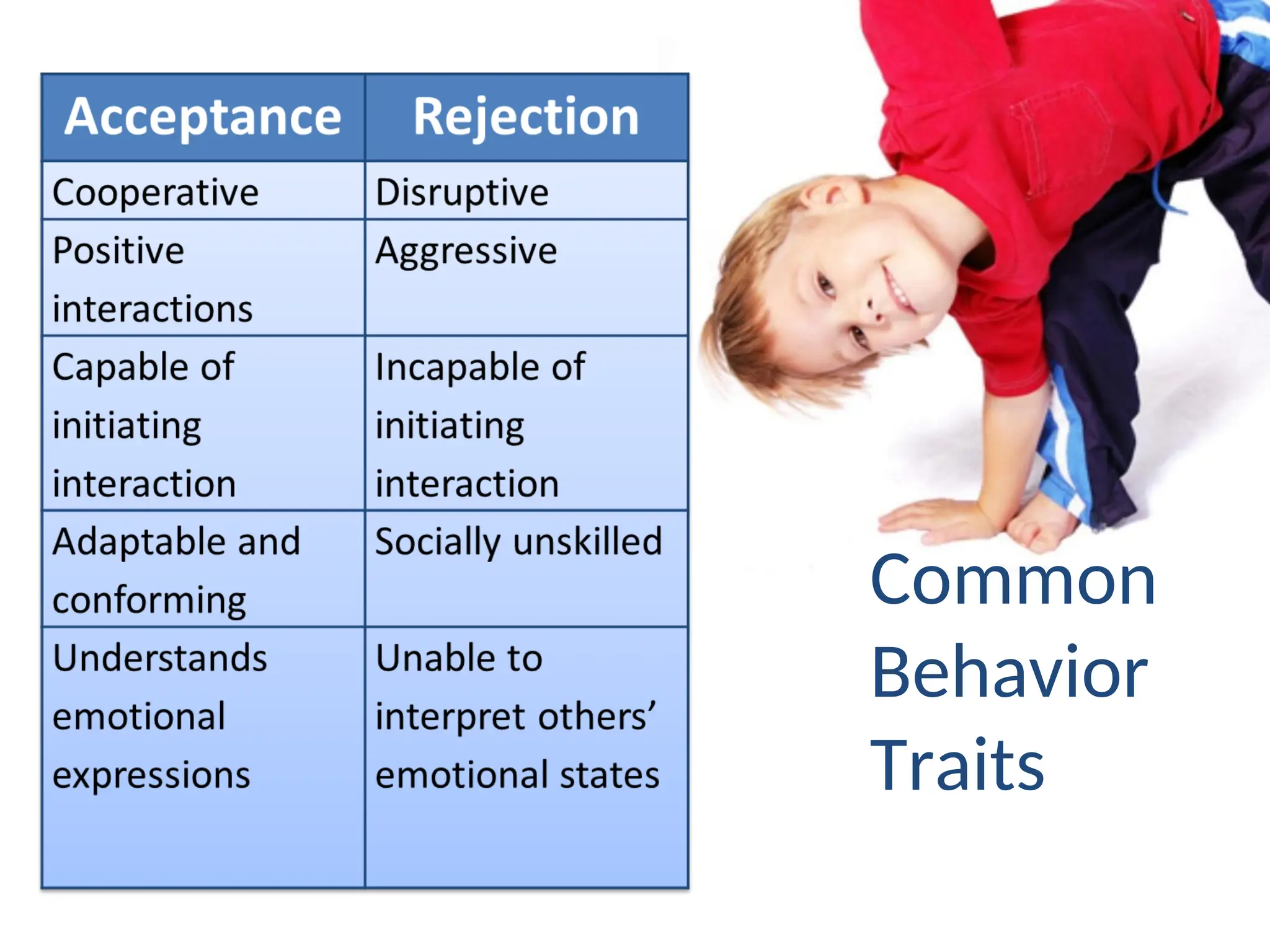The document discusses the impact of school, family, and societal influences on child development, focusing on school transitions and their effects on students during critical developmental phases. It examines the roles of teacher expectations, peer relationships, and family dynamics in educational outcomes while highlighting the significance of early childhood education and its long-term benefits. Additionally, it emphasizes the importance of understanding self-efficacy, locus of control, and social competence in shaping student motivation and achievement.




































































































































































